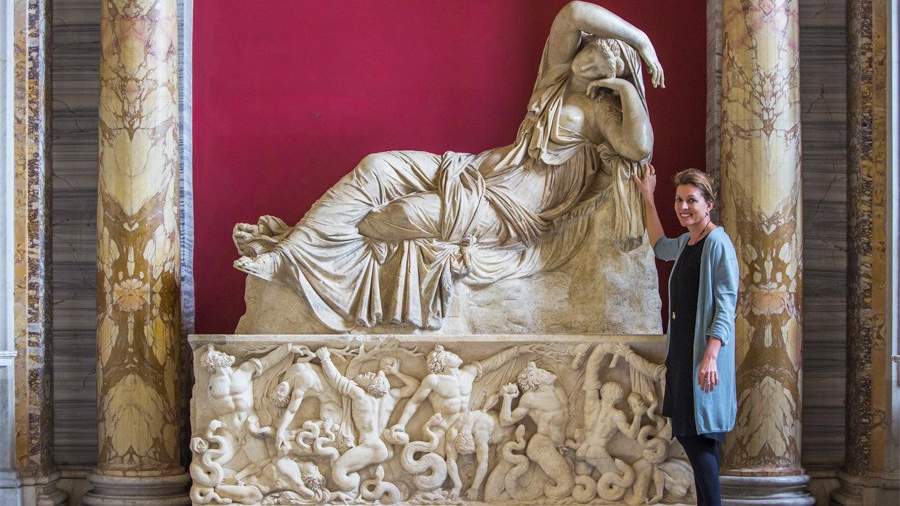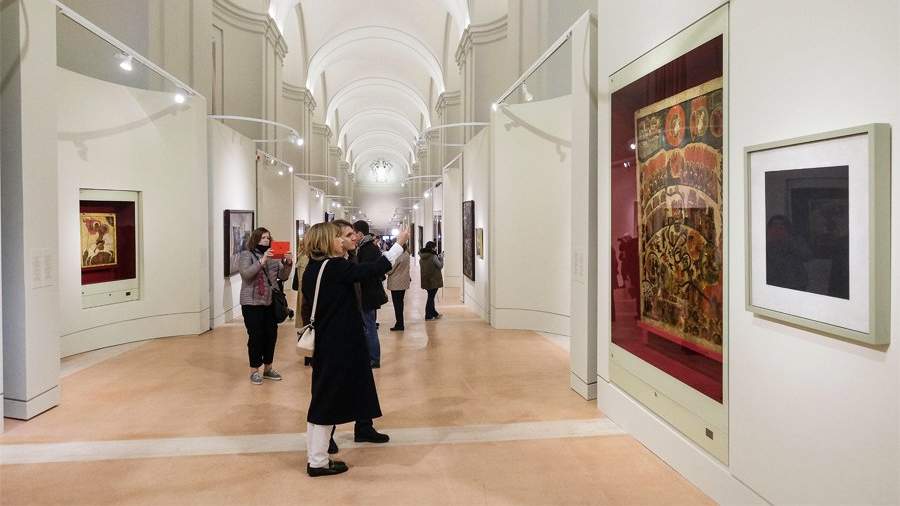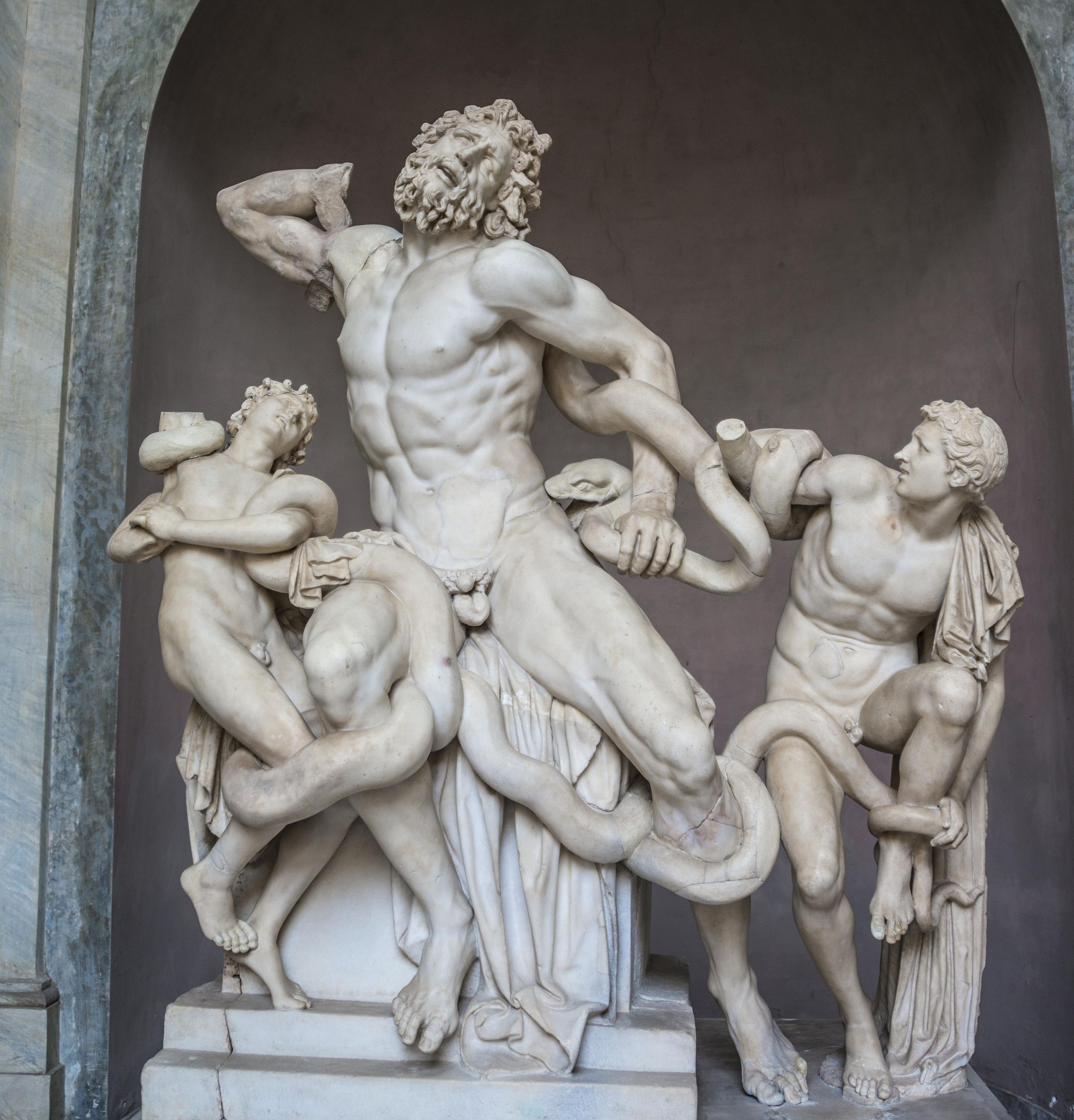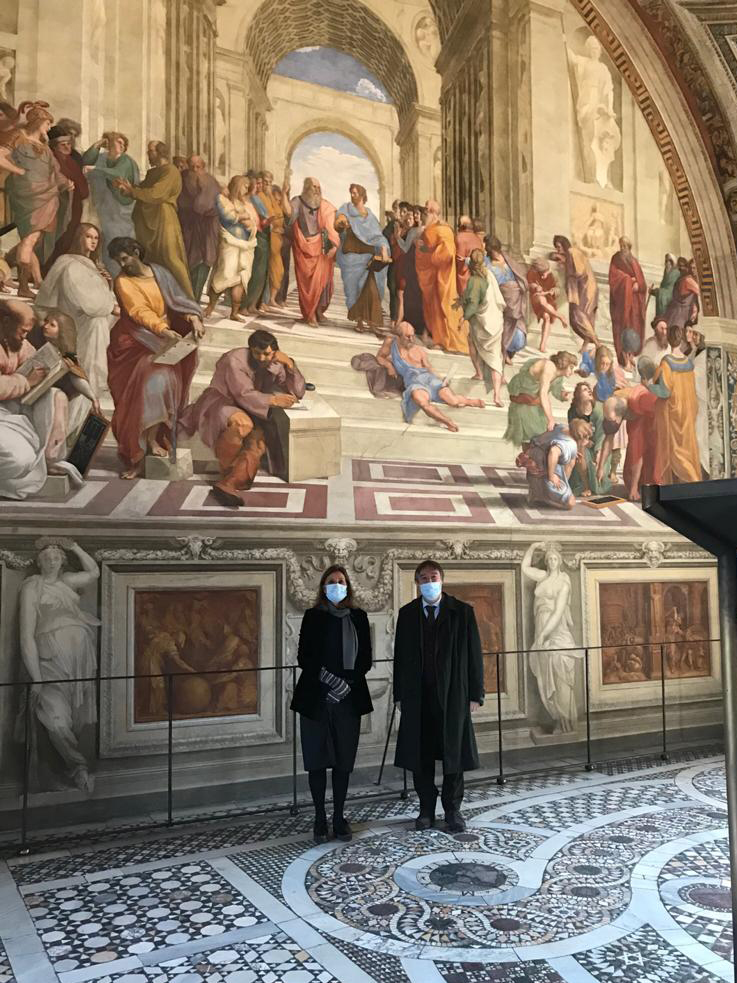Barbara Yatta is confident that Russians will soon return to Italian museums, she is afraid to build far-reaching exhibition plans, but hopes for a new project with the Hermitage. The director of the Vatican Museums, the first woman in this position in more than five centuries of the collection’s history, told Izvestia about this after the opening of the exhibition halls.
– What happens within your walls after a long lockdown?
– There are still few visitors. They now have a unique opportunity to walk slowly through the halls and calmly get acquainted with our masterpieces. The atmosphere is positive and hopeful. In the last week, 25 thousand people came to us – about the same number used to come in one day. We are glad that this number is growing steadily. I hope that we will see the Russians soon.
– Have your priorities changed since the pandemic?
– First of all, we strive to present our collections in such a way that the public can see and appreciate them in the best way. Unfortunately, several important projects with large museums in the world had to be canceled. I maintain close relations with the directors of the Hermitage, the Tretyakov Gallery, the Louvre and other institutions. We have the same problems. In these times it is difficult to make far-reaching exhibition plans or exchange works of art.
– Where do you see the mission of the Vatican Museums in the current conditions?
– It remains the same – to acquaint with the wealth of the papal collections. Let me remind you that in the Vatican Museums there are collections of Ancient Egypt, Greco-Roman antiquity – perhaps the best in the world – great Renaissance and Baroque painting and modern religious art. It is also very important that, unlike other large museums, not only the artistic value of works, but also the issue of faith is of particular importance to us.
“Beauty unites us,” Pope Francis said recently. The Vatican Museums, he said, should become living repositories open to all cultures in the world. How do you intend to achieve this goal?
– Before the pandemic, foreigners of different cultures and religions accounted for 80–85% of our visitors. Pope Francis wants us to share our cultural and spiritual heritage with everyone, to help find our roots. This purpose, in particular, is served by the Vatican Ethnological Museum Anima mundi (“Spirit of the World” – “Izvestia”), opened on October 18, 2019.One way or another, art unites us. Therefore, Dostoevsky believed that beauty would save the world. We do our bit as much as possible.
– The Vatican Museums exhibit about 22 thousand works of art – just a tenth of your grandiose collection. How to expand access to works that remain in storage?
– In large museums – the Louvre, the Hermitage, the Vatican Museums and others – there is approximately the same ratio of works on display and in storage. Despite the fact that the length of our halls is 7 km, we cannot show more. In some of our museums, there is a partial rotation of exhibits, such as works of modern art. In other cases, this cannot be done. We have created an online catalog, where all the exhibited works are presented, as well as partially those that are in repositories, for example, in the ethnological museum.
– Do you have any gaps in your collections? Do you aim to replenish your funds?
– I would not speak about gaps, but about individual collections that are less rich than others. In such cases, we aim to either acquire something or replenish them with gifts. In addition, we are trying to expand our collection of contemporary art, including a collection of photographs. But the main thing for us is not to buy new works, but to preserve and demonstrate what we have.
– Are there any new joint projects with Russian museums?
– It is too early to talk about a project with the Hermitage, which had to be suspended due to COVID-19. In 2018–2019, an exposition of the Tretyakov Gallery and other state museums was held in the heart of St. Peter’s Square (exhibition “The Russian Way: from Dionysius to Malevich” – Izvestia). Pope Francis visited her. I really love Russia and its museums, and our joint projects are very important for both sides.
– How successful is the dialogue between the Vatican Museums and contemporary religious art?
– This collection, which was created by Pope Paul VI, is constantly growing. We receive new paintings by contemporary artists, organize exhibitions, and provide our works to other museums. The Carla Maria Martini Museum in Milan is now hosting an exhibition of French masters from our collections – Rodin, Matisse, Chagall and others. We are also going to show the works of the contemporary Belgian artist Jean-Michel Folon and the Italian painter Gaetano Previati.
– Probably, it is not easy to find common ground between geniuses?
– Each creator has his own spiritual and aesthetic values. Take, for example, Van Gogh’s painting “Pieta” from our collection, which he painted a few months before his death. She came to us under Pope Paul VI. This very expressive work echoes Delacroix’s painting on the same subject. From it a bridge is thrown to the painting by Rubens, who, in turn, drew inspiration from the famous sculpture Laocoon and his Sons, one of the main masterpieces of the Vatican Museums. In general, in the art of different eras, much is interconnected.
Photo: Global Look Pressо / imageBROKER.com / Moritz Wolf
Sculpture “Laocoon and his sons” in the Vatican Museum Pio-Clementino
– Regardless of the era, true art, philosophers believe, is always spiritual. Some people claim that they go to the museum like to the church. Is it the same thing?
“Spirituality is always at the heart of art, which simultaneously expresses the artist’s creative“ I ”. I don’t think they go to museums like to a cathedral — a house of prayer and faith. Although a museum can also be a place of prayer. But they have completely different purposes.
– You have been in charge of the Vatican Museums since January 1, 2017. What are you most proud of? What was the most difficult thing for you?
“This difficult mission gives me great joy. Almost a thousand people work in the Museums. The most difficult were three months when we closed due to the epidemic. The day before, on March 9, I went around all the departments and announced the sad news to the employees: “Our generation has not known war, but now we are fighting an enemy that we feel but do not see. Stay at home, don’t worry. We are with you. I don’t know when we can go back. We care about our collection, but you are most important to Pope Francis. “
For the first few days, the empty halls seemed beautiful to me, then sadness swept over me. Museums are made for people. Today, life is returning, the number of visitors is growing. Therefore, I am happy.
– You are the first woman to lead the Vatican Museums in their more than five century history.
– Pope Francis chose me for the director’s post as a specialist, and not because he wanted to appoint a woman. The most important thing is to be appreciated in this position as a professional who fulfills his mission.
– You have been working surrounded by masterpieces for many years. Which artists in the Vatican Museums do you most admire?
“It is a privilege to be among the great creations every day. Before becoming director, I worked for two decades at the Vatican Library, headed the graphics department, which collects chamber art – drawings, prints, photographs, maps, plans.
It is difficult for me to choose individual works of our Museums, they are a single whole for me. Perhaps, in this jubilee year of Raphael, I will call him “Madonna di Foligno”. However, I like other painters just as much, for example Caravaggio, he is completely different, but no less beautiful.
Photo: Press Service of the Vatican Museums
Raphael’s fresco “School of Athens” in the Apostolic Palace, Vatican
– Particularly sensitive natures sometimes become victims of the so-called Stendhal syndrome. Under the influence of works of art, they are overwhelmed by an overabundance of emotions, up to and including loss of consciousness. Does something like this happen within your walls?
– Occasionally. One day, a psychiatrist friend of mine asked me to study Stendhal Syndrome by using electromagnetic waves to measure the emotions of visitors. We, of course, refused. One way or another, there are people who are really susceptible to this syndrome. During COVID-19, it became even stronger.
– The artist was your Russian grandmother – Alexandra (Asya) Olsufieva. She comes from a well-known aristocratic family, which owned a mansion on Povarskaya Street in Moscow, where the House of Writers is now located. Do you feel your Russian roots?
– I feel very strongly, my grandmother raised me and played a huge role in my development. I look very much like her. She was an incredibly generous person and spiritually gifted person. From her, my sisters and I inherited not only a love of art, but also a desire for freedom and independence, openness, and willingness to help.
Many trials fell to its lot. She left Russia at the age of 12. She married an Italian, gave birth to four children. Separated from her husband. She earned a living with her art and was very proud of it. Grandma’s sister, Masha Olsufieva, translated the great works of Russian literature into Italian. Her other sister, Daria Olsufieva-Borghese, was also generously endowed with artistic talents (the author of the books “Ancient Rome” and “Gogol in Rome” published in Russia. – “Izvestia”).
I love Russia, I speak a little Russian. Last year she received the “Russian Rome” prize (in the nomination “For the promotion of Russian art” – “Izvestia”), which she again dedicated to her grandmother.
The Vatican Museums – a complex of 12 museums – was founded by Pope Julius II in 1506. The collection began with the sculpture Laocoon and His Sons, discovered in the vineyards of the Roman hill of Equilin. The most famous works are the Sistine Chapel painted by Michelangelo and Raphael’s stanzas. The Pinakothek presents a collection of paintings from the 12th – 19th centuries: Giotto, Leonardo da Vinci, Raphael, Titian, Veronese, Caravaggio. The collection of modern religious art contains about 800 works by Rodin, Kandinsky, Chagall, Picasso, Matisse, Gauguin, Van Gogh, Modigliani, Dali. The Vatican Museums are among the top five most visited museums in the world. Last year the number of visitors exceeded 6 million.



